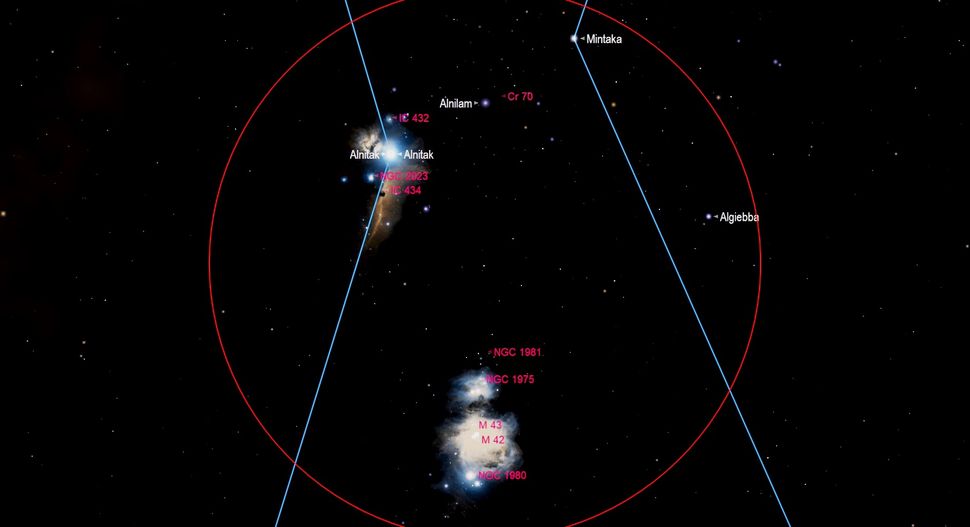Best Night Sky Events of February 2021 (Stargazing Maps)
FOLLOWUP
By @astrogeoguy Chris Vaughan | Geophysicist and Amateur AstronomerFebruary 1, 2021 | See what’s up in the night sky for February 2021, including stargazing events and the moon’s phases, in this Space.com gallery courtesy of Starry Night Software.
(Image credit: Starry Night)Monday, Feb. 1 — Orion Nebula (overnight)
The sword of Orion, which covers an area of 1.5 by 1 degrees (about the end of your thumb held up at arm’s length), descends from Orion’s three-starred belt. The patch of light in the middle of the sword is the spectacular and bright nebula known as the Orion Nebula or Messier 42. While simple binoculars (red circle) will reveal the fuzzy nature of this object, medium-to-large aperture telescopes will show a complex pattern of veil-like gas and dark dust lanes. Adding an Oxygen-III or broadband nebula filter will reveal even more details. The nebula and the stars forming within it are approximately 1,350 light-years from the sun, in the Orion arm of our Milky Way galaxy.
